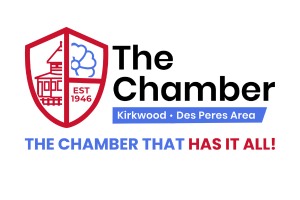Engage Like a Pro: Innovative Strategies for Dynamic Presentations
Delivering a presentation transcends merely sharing information; it's about crafting an experience that captivates and motivates your audience. Whether you're aiming to influence a corporate team or educate a classroom, success hinges on meticulous preparation and the ability to resonate deeply with your listeners. This guide unfolds the critical steps necessary to create a presentation that not only maintains attention but actively inspires and compels your audience to action.
Blueprint Your Ideas
Start by structuring your presentation with a defined beginning, middle, and end. This classic narrative structure helps your audience follow along effortlessly. In the beginning, introduce your topic and what you aim to cover. The middle should delve into the details of your subject, presenting the bulk of your information. Conclude by summarizing your main points and suggesting next steps or implications. This structure not only aids in comprehension but also in retention. Emphasize transitions between sections to keep the narrative smooth and engaging.
Know Your Audience
To truly connect with your listeners, tailor your presentation content to reflect their interests and needs. Start by understanding who your audience is and what they care most about. If you're speaking to a group of professionals, focus on how your topic impacts their industry or daily tasks. For an academic setting, link your discussion to current studies or theoretical frameworks. This alignment makes your presentation more relevant and engaging. Adapting your language and examples to fit the audience's perspective enhances relatability.
Generate Interest with AI Graphics
AI technology empowers non-designers to create high-quality visuals easily, enabling anyone to produce professional-looking graphics. With AI, you can experiment with various design elements, adjust layouts, and enhance images without needing extensive design knowledge. You can use an AI text-to-image tool to create images quickly by describing the image you want generated, and even the style and medium you want it in. This allows you to create AI art with text, opening up possibilities for personalized and innovative content.
Master Non-Verbal Cues
Your non-verbal communication plays a critical role in how your message is received. Maintain eye contact with your audience to build trust and connection. Use gestures to emphasize and enhance your verbal points. These non-verbal cues engage your audience on a deeper level and help to underscore the key messages of your talk. Your body language should mirror the enthusiasm and importance of your spoken words. Effective use of space and movement can further communicate your confidence and authority.
Practice Makes Polished
Rehearse your presentation multiple times to ensure a smooth delivery. Each rehearsal will help you refine your timing, transitions, and the natural flow of your narrative. Practicing in front of a mirror or with a friend can provide you valuable feedback on both your verbal and non-verbal delivery. Remember, confidence in delivery comes from thorough preparation. Familiarity with your material allows you to focus more on delivery and audience engagement. Repetition also aids in reducing nerves, making you appear more relaxed and approachable during the actual presentation.
Prepare for the Unexpected
Always be prepared for potential technical issues. Have backup copies of your presentation stored on multiple devices or cloud services. Consider having printed outlines or notes in case of a complete technology failure. Additionally, familiarize yourself with different methods to present your material, whether through a whiteboard, flip charts, or just speaking. Flexibility is key to overcoming presentation obstacles. This preparation ensures that you remain unflappable, regardless of circumstances. Knowing alternative presentation methods can turn potential disasters into opportunities for demonstrating your adaptability and composure.
Simplify Your Slides
When it comes to slides, less is more. Keep text minimal to prevent your audience from reading slides instead of listening to you. Use keywords or short phrases and reinforce them with visuals or diagrams. This strategy keeps your audience focused on your verbal presentation and makes the visual elements more effective. Simplified slides also allow for quicker adjustments during the presentation, should the need arise. This minimalism not only clarifies your points but also streamlines the focus of your presentation to the essentials.
As you refine your presentation skills, consider each encounter as an opportunity to leave a lasting impression on your audience. Harness the power of storytelling, AI-enhanced visual aids, and keen audience awareness to elevate your delivery. Ensure your non-verbal cues and rehearsed content work in harmony to present your message confidently and smoothly. Embrace the potential for technical hitches by preparing alternatives that demonstrate your adaptability. In the realm of effective presentations, your ability to engage and inspire becomes the true measure of success.
Become a member of The Kirkwood – Des Peres Area Chamber of Commerce to get the tools and make the connections you need to build a winning business in our community!
This Hot Deal is promoted by Kirkwood-Des Peres Area Chamber of Commerce.

